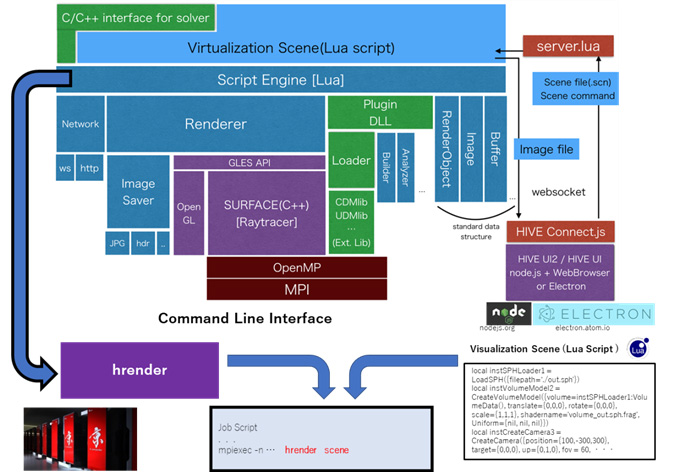TOP
 Research
Research
 Research Teams
Research Teams
 Past Research Teams
Past Research Teams
 Advanced Visualization Research Team (Ono)
Advanced Visualization Research Team (Ono)
Advanced Visualization Research Team (Ono)
Japanese
Team Leader Kenji Ono
- 2016
- Professor, Research Institute for Information Technology, Kyushu University
- 2014
- Visiting Professor, Institute of Industrial Science, The University of Tokyo
- 2013
- Visiting Professor, Graduate School of System Engineering, Wakayama University
- 2012
- Visiting Professor, Graduate School of System Informatics, Kobe University
- 2012
- Team Leader, Advanced Visualization Research Team, AICS, RIKEN
- 2011
- Researcher, Institute of Industrial Science, The University of Tokyo
- 2008
- Visiting Professor, Advanced Visualization Laboratory, Iwate Prefectural University
- 2006
- Lab. Head, VCAD System Research Program, RIKEN
- 2005
- Visiting Professor, Graduate School of Information Science and Technology, Hokkaido University
- 2004
- Lab. Head, Integrated Volume-CAD System Research Program, RIKEN
- 2003
- Visiting Researcher, Applied Physics Laboratory, Washington University
- 2001
- Associate Professor, School of Engineering, The University of Tokyo
- 1990
- Vehicle Research Laboratory, Nissan Research Center
- 2000
- D. Eng., Industrial Science, Kumamoto University
- 1990
- M. Eng., Kumamoto University
Research summary
Development of Supporting Technologies for Large-Scale Parallel Simulations
Besides simulation codes, supporting tools and libraries have played an important role in large-scale parallel simulations. For instance, they are used to extract meaningful information from the simulation results in order to facilitate the understanding of the underlying physical phenomena, or they can provide better feedback during an engineering design process. Some examples of these essential supporting technologies are the computational grid generator, scientific visualization software, and data I/O management libraries. As the scale of simulations increasess, and when striving for better precision and performance, these supporting tools and libraries are required to scale accordingly to match the main parallel simulation codes. Taking this into consideration, we are developing supporting tools and libraries targeting production- level simulation codes developed for the K computer, and we are also making them available to the computational science community in an effort to help promote the practical usage of large-scale simulations.
Our software development includes: (1) a large-scale parallel visualization system (HIVE); (2) a performance monitoring library (PMlib); (3) a performance visualization system (TRAiL); (4) a parallel data I/O management library (xDMlib); and (5) a workflow management system (WHEEL).
It is worth noting that these new supporting tools and libraries are being developed as cross-platform software products targeting easy portability, maintenance, and a long-term development cycle. Therefore, besides the K computer, they are designed to run on most of the major computer systems, and also the Post-K computer system.
Main research results
Large-scale parallel visualization system with flexible usage modes
Unlike numerical simulation, visualization simulation needs and requirements can greatly vary from user to user, and usually there is no standard rule or procedure for executing the visual analysis of a given simulation result. Considering the heterogeneous hardware systems involved in an HPC environment, we developed a large-scale parallel visualization system named HIVE (Heterogeneously Integrated Visual-analytics System), which flexibly supports different usage modes: local or remote; batch or interactive; and post-hoc or in-situ visualization modes.
HIVE uses a highly scalable parallel ray tracer as the rendering engine, which is also capable of handling user-defined fragment-level shader codes (written in OpenGL ES Shading Language 2.0) to enhance visual quality and representation. HIVE also provides a Web-based graphical workspace for preparing the necessary visualization pipeline, and for interactive visual exploration on local machines.
HIVE also adopts the sort-last parallel rendering approach where the distributed rendered images are gathered and merged via a scalable parallel image-compositing library, in order to generate the final image. We confirmed the scalability of the HIVE system by rendering an ultra-high-resolution (32K) image utilizing all computational nodes of the K computer. We will continue development by adding new functionalities and increasing the number of supported data formats.

